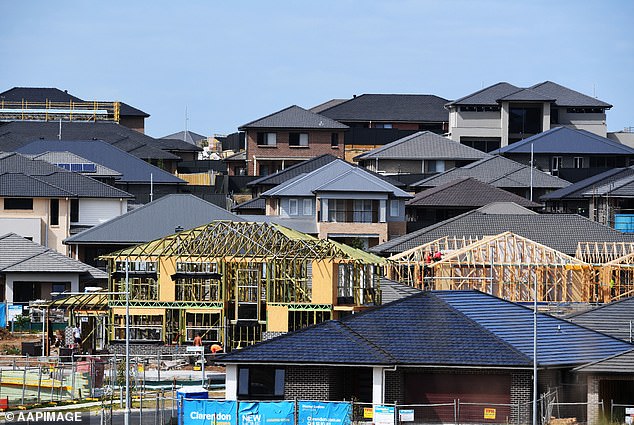How Australia’s all-time record levels of immigration have created a ‘humanitarian and economic disaster’
High immigration risks causing a ‘humanitarian disaster’ by making housing even more unaffordable as supply fails to keep pace with population growth, a think tank says.
A record 518,000 people moved to Australia in the 2022-2023 financial year, putting net overseas migration at a level more than double the 200,000 level of the 2007 mining boom.
But housing supply is not keeping pace with demand, with approvals for private sector homes falling 9.9 per cent in January, the Australian Bureau of Statistics revealed this week.
This puts into question Prime Minister Anthony Albanese’s pledge, along with state and territory Labor leaders, to build 1.2 million homes over five years from July.
High immigration has caused a ‘humanitarian disaster’ by making housing unaffordable as supply cannot keep pace with population growth, says a think tank (pictured is Sydney’s Wynyard train station during peak hours)
Daniel Wild, the deputy director of the Institute of Public Affairs, said high immigration meant Australia would struggle to accommodate the influx of population.
“Governments at all levels are setting Australia up for economic and humanitarian disaster as the latest housing approvals show we are simply not building enough homes for both first home buyers and new migrants, despite record numbers,” he said.
Mr Wild said the decline in building permits, amid higher costs, highlighted ‘the real consequences of unplanned, record levels of migration’.
“Despite repeated warnings, the federal government continues to press the accelerator at the exact same time the brakes are being slammed on housing approvals,” he said.
Only 99,759 new private homes were approved in the year to January, with 7,461 of those approved in the first month of 2024.
With Australian households averaging 2.5 people, that would only be enough to house 249,398 people before taking new apartments into account.
The IPA calculated that Australia would have a net housing supply deficit of 252,800 homes in the six years to 2028, even if immigration slowed from recent record highs.
With a fertility rate of just 1.7, or below the replacement level of 2, Australia relies on high immigration to have a working-age population for tax purposes and to fill labor shortages.
“Rule: Unplanned migration has failed to address Australia’s labor shortage crisis, the very thing the federal government is using to justify such rapid increases in inflows,” Wild said.
“It’s clear that this lazy approach to solving the labor shortage isn’t working and more attention needs to be paid to getting Australian retirees, veterans and students into work.”
Sydney’s median house price of $1.395 million is out of reach for anyone earning less than $200,000 a year, individually or as part of a dual-income couple.
Someone with an average full-time salary of $98,218 can only buy a house worth up to $639,000 if they have a 20 percent mortgage deposit.

Daniel Wild, the deputy director of the Institute of Public Affairs, said high immigration meant Australia would struggle to accommodate the influx of population (pictured are houses under construction in Oran Park in the far south-west of Sydney)
That’s based on RateCity’s calculation that banks can lend someone 5.2 times their salary, with the Reserve Bank of Australia’s cash rate now at a 12-year high of 4.35 percent.
A single mother who wants to live in a house instead of a unit has fewer choices, while zip codes in flood zones are more affordable.
This means we can buy a cheaper home in flood-prone Gorokan on the NSW Central Coast, 113 kilometers north of Sydney, where the average price is $686,487, CoreLogic data shows.
In Brisbane, where the average house price is $899,474, someone wanting a home within 12km of the city center would only have a choice in Rocklea, another flood-prone area, where the average price is $624,714.

In Brisbane, where the median house price is $899,474, someone wanting a home within 12km of the city center would only have a choice in Rocklea, another flood-prone area, where the median price is $624,714 (shown are March 2022 floods)
